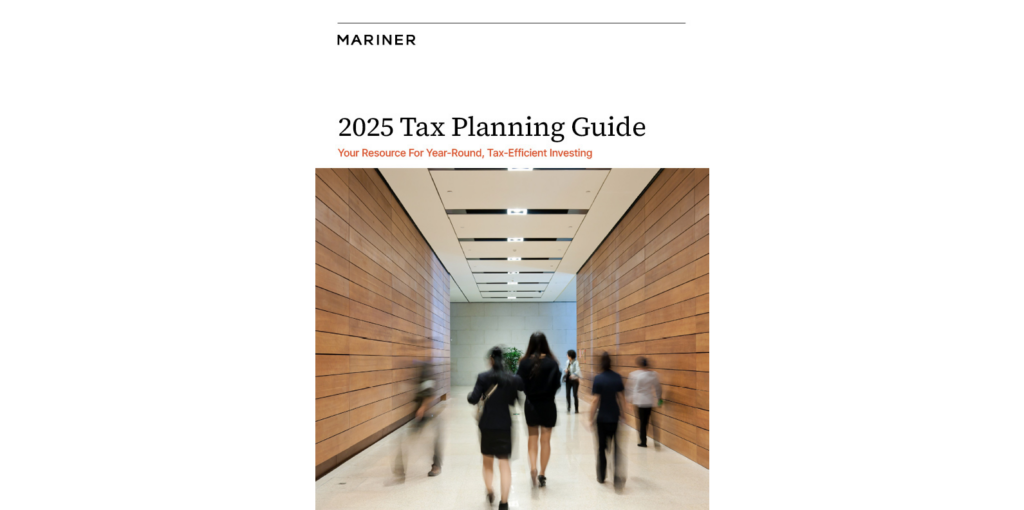Reconsidering Foundation and Endowment Distribution Strategy

The objective of foundations and endowments should be to play the “infinite game.” Playing an infinite game means sustaining distributions indefinitely. Sustaining distributions is dependent on sustaining the real value of the asset portfolio, net of those payouts. Unfortunately, distributions, once established, are often difficult, if not impossible, to reduce. With interest rates currently near zero, available fixed income returns have fallen, as have return expectations for other asset classes. Consequently, existing distributions have come to rely more heavily on variable investment outcomes, defined as the returns associated with equity or non-fixed income investments.
For some funds, targeted distributions effectively equal or exceed the investment portfolio’s projected “long- term, average expected total return.” The difference between income, which is reasonably reliable and readily predicted, and average total return, which is neither reliable nor predictable, underpins the very definition of risk within finance. Spending earnings that are expected but unearned places the ability to continue an infinite game in serious jeopardy.
Blighting the Blossom
In David Copperfield, Dickens describes a conversation between Copperfield and Mr. Micawber, where Micawber provides the following financial advice: “Annual income, twenty pounds, annual expenditure nineteen nineteen and six, result happiness. Annual income twenty pounds, annual expenditure twenty pounds ought and six, misery. The blossom is blighted, the leaf is withered, the god of day goes down upon the dreary scene, and – in short you are forever floored.”
For some, this is referred to as Micawber’s Principle. Others prefer the modern equivalent, variously ascribed to American philosopher Bill Earle, which says: “if your output exceeds your input, your upkeep will be your downfall.”
When any institution places a heavy reliance on variable returns, whether due to the lack of sufficient income or because of an inability or unwillingness to restrain spending, variability becomes the pretext for outspending income.1 Specifically, since the variability of returns (as manifested by investment risk) make a fixed budget impossible, spending most (or all) of the long-term, average expected return in advance becomes the strategy of choice. Most would logically acknowledge that the observation “the lake is, on average, three feet deep” is of little use to a drowning man. We readily ignore, however, the tautological necessity that any action based on an assumption of an average will be wrong, on average.2
How, then, should a foundation or endowment conduct its finances to avoid blighting the blossom, to paraphrase Dickens?
The Danger of Popular Falsehoods
A good start could be to heed the sage and practical advice shouted to the man standing in the hole, namely: “PUT DOWN THE SHOVEL!” For foundations and endowments, this may be more easily said than done. Using the expected return as the basis for making distributions is common and reflects the confusion between risk and uncertainty. It coexists with the persistent (but equally erroneous) notion that more investment risk necessarily begets more return. Without an intellectual recognition that both policies are erroneous (albeit incredibly popular), however, a realistic assessment seems unlikely. After all, what’s the harm of a shared falsehood among contemporaries?
Bertrand Russell, the British philosopher and mathematician, observed during a lecture on logic that the disturbing but necessary implication of accepting a falsehood is that it can be used to prove any other falsehood. The story is that a student raised his hand and challenged Russell’s contention, saying “if 1 = 0, prove that you are the Pope.” Russell is said to have replied, “add one to both sides of the equation, so that 2 = 1. The set containing me and the Pope = 2, but since 2 = 1, then I am the Pope.”3
Believing that 1 = 0 does not make adding risk to create higher returns or making distributions reliant on variable returns credible strategies. This is true regardless of how many high-profile universities and their highly paid consultants repeat it.
Beyond just bad policy, for perpetual entities like endowments taking risk for the purpose of habitually spending expectations instead of realizations is an affront to future generations. As famously described by Nobel Prize winner James Tobin, “the trustees of endowed institutions are the guardians of the future against the claims of the present.”4 This concept is often referenced as intergenerational equity, defined as a general view that every generation, whether present or future, should fairly share resources and the benefits that accompany them. Trustees who support aggressive current spending based on variable (i.e. risky) expected future returns become guardians of the present, or the status quo, to the potential detriment of subsequent generations.
It’s not necessary to have Nobel prize-winning wits like Russell or Tobin to understand why spending future expected earnings in the present is both bad business and grossly unfair. The application of basic economic principles is all that is needed.
The Economics of Risk Equivalence
As investors, we are taught that risk is a necessary component for achieving return. Returns are typically considered in an average context over multiple periods, resulting in a compounding effect through time. Risk, on the other hand, is rarely considered through the lens of time or as a compounding element. Risk is typically presented as a “standard deviation” around the average annual expected return outcome, i.e., a nuisance that must be endured on a period-to-period basis. Convention thus results in a tendency to treat future returns as tangible, and risk as short-term and fuzzy. When appropriately adjusted for risk, however, efficient market pricing implies that future potential returns are never tangible, and will, always and everywhere, have a present value of zero. The risk associated with these returns guarantees it. In fact, current spending can never be greater than the value of the assets on hand.5 And since all spending occurs in present time, future returns cannot be relied upon for current distributions, an observation directly counter to most investors’ perceptions.
To illustrate: In present time, two portfolios, each worth $1 million, are considered equal in value. This is true without regard to their underlying investment strategy. For example, assume Portfolio A holds $1 million in stocks, while Portfolio B holds $1 million worth of bonds. Suppose the average annual expected return for the stock market over the next 10 years is 7% per year, implying an expected value of Portfolio A (at the end of 10 years) of $1,967,151.6 Suppose the current yield on 10-year bonds is 3%, implying that Portfolio B’s expected value in 10 years is $1,343,916. Yet the present value of the two portfolios remain equal, implying that the $623,235 differential in potential future return has no net present value.
The notion that the $1 million Portfolio A is equal to the $1 million Portfolio B may seem obvious, at least until the introduction of the concept of expected future value. Semantics clearly contribute to the confusion. “Expected,” in the context of modeling a portfolio’s investment outcomes, does not mean it is the return that one should “anticipate.” In this application, the term expected has its origin in statistics where it is used to indicate the midpoint (or mean) of some range of potential outcomes.
Even if returns are not guaranteed and if “expected” references a range, wouldn’t an astute investor prefer, by some economic measure, the portfolio with the highest expected long-term value? The correct answer is no – at least not by “some economic measure.” To repeat: when appropriately adjusted for risk, as defined as the range of potential future outcomes, the present value of the two portfolios must be equal.
If future potential returns possessed any net present value whatsoever, an efficient market would recognize this value. If you remain unconvinced, consider this classic example of economic gravity in the form of price arbitrage in action:7
You and another investor agree to participate in a wager of sorts, whereby at the end of 10 years you each must pay the other the proceeds of one portfolio (A or B). As a savvy investor, you indicate a preference to receive the proceeds from Portfolio A (the return on stocks) and pay out the proceeds of Portfolio B (the return on bonds). As an accommodation, the other investor asks, “What would you be willing to pay in advance to receive A’s future value instead of B’s?” Given the expected excess return of over $600,000, you offer the other investor $250,000 for the privilege. The other investor (happily) takes your money.
She then borrows $1 million at the market rate of 3% per year for 10 years, arranging for all interest due to be paid at the end of the term. She invests the borrowed money in the stock market for ten years, then pays you the total value of her “Portfolio A” investment, thereby satisfying her obligation. You in turn pay her the value of Portfolio B, the sum of which she uses to pay the loan in full. Your $250,000 goes straight into her pocket as pure, riskless profit.
Spending returns that have yet to be realized is tantamount to the payment of $250,000 in advance; it confuses an opportunity for excess return with the present risk-adjusted value of that opportunity, as defined by an efficient market. As demonstrated, when properly risk adjusted, the potential performance differential has no present value, a fact that is confirmed daily via real-time pricing in global securities markets.
At the end of the 10-year term, Portfolio A may have produced the expected return, it may have produced more, or it may have produced less. This is the definition of risk within finance – more things can happen than will happen.8 The market priced this risk by approximating the midpoint payoff in the form of the mean (or average) of a range of potential values, recognizing that half of all 10-year outcomes would be expected to exceed this number, and half would be expected to fail to reach this level. Spending a portion of this average expected excess return before it materializes denies the very dynamic (the risk that future value could be less – or more – than what is expected) that makes the potential excess return possible.
Are We There Yet?
An optimistic trustee may be inclined to assume that given sufficient time, on average, the expected excess return will materialize.9 Beyond the potential that this is a wrong assumption, there is the prospect that a potentially nasty sequence of returns (though they may still provide for the realization of the long-term average) may intercede, causing damage to the value (or “terminal wealth”) of the portfolio. A sufficiently reduced asset value could render the endowment incapable of meeting established distributions in the future, or worse, no longer able to function.
This potential for long-term damage is often overlooked due to the referenced misunderstanding regarding the relationship between time and risk. Most investors believe that risk, as measured by the cumulative average return, declines with time. But the accumulated average outcome is not the critical measure of risk in this application. For an endowment, the ongoing value (i.e., the “wealth” or “balance” of the endowment investment account) at the end of each successive period is the critical metric. It is this balance of value that effectively determines how many dollars are available to make or sustain future distributions.
In this application, risk and time are opposite sides of the same coin (if no time passed, there would be no risk).10 Conversely, when focused on the correct metric – wealth – the passage of time actually increases risk by expanding the range of potential (and potentially insufficient) cumulative outcomes.11
Imagine a plane leaves San Francisco, bound for Philadelphia, but with a volatile compass. The compass has been shown to provide the correct reading, on average, over several flights but suffers hour to hour with a level of variability around the true heading. Consequently, on any particular flight, the longer the plane flies, the more off track it might become. By the time it runs low on fuel, it may well arrive in Philadelphia, but it could also find itself in Bermuda, or in the icy North Atlantic. The fact that the two outlier destinations are equidistant from Philadelphia, and therefore were correct, on average, is of little value to those on board.
The most important consideration is where they find themselves at the end of the journey. Likewise, the critical metric for endowments is where the asset balance lands at the end of each period.
Risk, Reward, and Intergenerational Unfairness
Investment strategy is often built around the risk tolerance or risk preference of the investor. Risk preference, however, is typically considered a property of individuals, not institutions.12 As institutions, endowments do not directly bear risks or earn rewards. Individual donors enjoy the rewards (the satisfaction) of current programs, as do Trustees in charge of the process. Recipients of endowment programs are also clear benefactors. To be considered fair and equitable, however, the investment risks associated with the process should rightfully be endured by those who receive the benefits.
To illustrate, assume Generation One believes in “equities for the long run” and so chooses to hold Portfolio A, consisting of a 100% allocation of the endowment’s assets to stocks. Since stocks are expected to produce an average 7% return per year, distributions are set to equal 7% of the balance of the endowment fund.13 Over the 10-year period, Generation One enjoys the current level of distributions, regardless of the actual portfolio outcome. Generation One has “pre-spent” the potential rewards of the variable-return risk they have taken. In this example, all $623,235 of it.
If this 10-year period turns out to provide less investment return than was anticipated (one of the potential outcomes that can happen), Generation Two will be forced to endure the consequences, presumably fewer resources in the form of lower distributions but also the degradation of the foundation or endowment asset base. By consuming the expected return in advance, Generation One always wins the coin flip. Future generations bear the full range of risk in the form of potentially losing ground, breaking even, or realizing a larger level of assets and subsequent distributions. Regardless, the intergenerational treatment cannot be described as “equitable” since the rewards of the strategy are reaped by those who do not share in those risks.
As declining expected earnings have fallen behind (or barely supported) distributions, some foundations and endowments have been encouraged to simply add investment risk (private equity, anyone?). Adding risk produces a higher “expected return,” flattering the appearance of sustainability. But once again, as the midpoint of a distribution (that will expand now even more so through time), the only certainty associated with adding portfolio risk is the realization of more variability in future outcomes, not necessarily more realized return. Since Generation Two will own the outcome (again, for better or worse), however, this becomes an attractive, if not cynical alternative to the much harder conversation on reducing current distributions (i.e., living within one’s means).
Procrastination: The Thief of Time14
The deflationary supernova that is the global pandemic has exacerbated and potentially extended the past decade of supportive monetary policy, resulting in the potential for interest rates to remain much lower for considerably longer. Reductions in capital market expectations, already a staple of portfolio construction, will continue to place pressure on future expected returns and therefore the appearance of sustainability for endowments and foundations.
Maintaining a distribution policy at a level well in excess of current rates of income is inconsistent with the infinite game and unfair to future generations. The time has arrived for a critical and clear-eyed review of distribution policies, practical limitations on investment risk, and, at a minimum, thoughtful consideration and discussion on the sustainability and long-term implications of current distributions.
Sources:
1This includes public and multi-employer defined benefit pension plans that utilize a fixed discount rate to discount future liabilities, where the discount rate is (effectively) the expected future (variable) investment return.
2Savage, Sam L. The Flaw of Averages: Why We Underestimate Risk in the Face of Uncertainty. Wiley, 2012.
3http://ceadserv1.nku.edu/
4Tobin, James. 1974. “What Is Permanent Endowment Income?” American Economic Review, Vol. 64, No. 2, (May), pp. 427-432.
5Waring, M. Barton and Laurence B. Siegel. 2018. “What Investment Risk Really Is, Illustrated” Draft/Abstract dated 02/21/2018.
6Future value = (1+i)N, where i = 7% and N=10 for Portfolio A, and i = 3% and N = 10 for Portfolio B
7Bader, Lawrence N., Gold, Jeremy. “Reinventing Pension Actuarial Science” The Pension Forum, Volume 15, Number 1, January, 2003.
8As popularly referenced to Professor Elroy Dimson of the London Business School
9Though there is no theoretic or empirical evidence to support that belief
10Bernstein, Peter L. Against the Gods: The Remarkable Story of Risk. John Wiley & Sons, 1998.
11Bodie, Zvi, On the Risk of Stocks in the Long Run (December 1994). Harvard Business School Working Paper No. 95-013.
12Bader and Gold point out that this is true in pension plans as well, where taxpayers are responsible for public pension fund shortfalls, as are shareholders in the case of corporate plans.
13This ignores the common practice of smoothing, often applied by calculating distributions based on the moving average value of the portfolio, or via a heuristic like the “4% Rule”. While a convenient way to absorb adjustments, smoothing is no substitute for economic reality, and contributes to confusion over both outcomes and trends.
14From Copperfield’s Micawber: “…never do tomorrow what you can do today. Procrastination is the thief of time. Collar him!”

